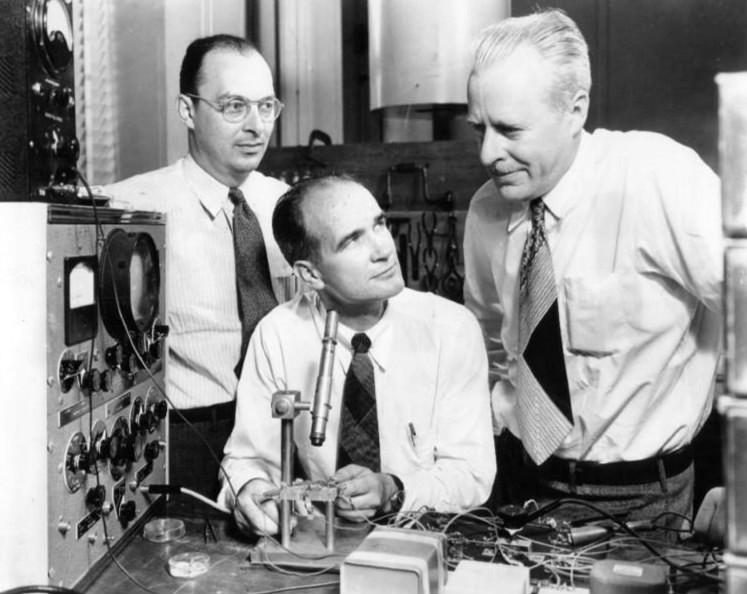Alfred Nobel was an inventor and a businessman who was born in Stockholm, Sweden. Of the hundreds of patents he earned in his lifetime, his invention of the dynamite (an explosive mixture whose main constituent is nitro-glycerine) is the most popular. After his death in 1896, when his will was opened, a huge surprise awaited. He had left all of his fortune to be awarded yearly, to the people who had contributed their best to the fields of physics, chemistry, physiology/medicine, literature and promotion of peace (Economics was added in the later years). Thus, the Nobel Foundation was instituted, and the prizes have been awarded by various committees for each field, since 1901.
Each awardee of the Nobel is called a laureate and the award consists of a gold medal, a certificate and a certain sum of money (the foundation decides the sum). The prize is not awarded posthumously. However, if the winner dies between the announcement of the prize and the award ceremony, he/she would still be given the prize.

Like most awards, there have been disagreements and controversies regarding the Nobel as well. In the past, certain committee members have also resigned owing to lack of consensus. People have refused the award, not been able to receive it in person due to the political condition in their home country etc…When we look at Nobel Laureates by country, the United States stands first, with 375 laureates. It is followed by the United Kingdom, which trails by a huge margin with 129 laureates. The position of USA could be due to a multitude of reasons. In fact, the Nobel prizes are disproportionately distributed across countries and the West is always given priority.
Even when we look at Nobel prizes by university affiliation of the laureates, it is Harvard – an American University that stands first. Out of the top 10 universities in the world that have produced the most number of laureates, 8 are American universities.
Notable Nobel Laureates belonging to the US
Theodore William Richards

Richards was a chemist and was the first American to win the Nobel Prize for Chemistry in the year 1914. He was awarded the prize for his work on determination of the atomic weights of chemical elements. He, along with his students worked on determining the atomic weights of almost 55 elements. Given the level of advancement of science in his time, the process to calculate the weights was fairly tedious. He also made significant contributions towards the concept of isotopes of an element. Richards not only graduated from Harvard with a B.A degree but also went on to become the chairman of the chemistry department at his alma mater. He received honorary doctorates from multiple universities and also received recognition in the form of many awards. He guided some doctoral students who went on to make their own discoveries and contributions.
Pearl S Buck

Pearl S Buck was born to religious parents in the year 1892. She spent most of her childhood in China, along with her parents who were missionaries. Growing up, she learnt both English and Chinese eventually becoming proficient in both. Although she moved to the US for higher education, she did shift back to China for a while before finally settling down in Pennsylvania. Most of her work describes what her life was like in China, the landscape, the people(mostly the peasants) and the country.
Out of hundreds of American laureates who have won the Nobel in various fields, only 11 have won prizes in literature. And it is a known fact that even today, after more than a century since the first Nobel Prize was awarded, only a handful of women have won the prize. So Pearl Buck’s prize, given the time, was indeed special. She not only wrote on subjects like women’s rights, adoption and war but also did a lot of humanitarian work in her lifetime. She established the world’s first inter-racial adoption agency. Today, both her birthplace and her residence at the Nanjing University where she briefly held a teaching position, serve as memorials.
John Bardeen

John Bardeen is the only person in history, to receive the Nobel Prize in Physics, twice. In 1956, he shared the prize with William Shockley and Walter Brattain for the invention of the transistor. This is again a special prize because most of the prizes have been in recognition of discoveries rather than inventions. The second one came in 1972 and was shared with Leon Cooper and John Schrieffer (who was Bardeen’s Doctoral student). This one was in recognition of their work on superconductivity and development of the BCS theory.
Bardeen was known to be a very down-to-earth person. Contrary to the usually portrayed image of ‘genius,’ he mixed freely with the public and led an ordinary life. He also received many other awards and recognitions (during and after his lifetime), honouring his contributions to physics.
Richard Feynman

To the school students of present day, Richard Feynman is the scientist who has authored books on his cool lectures on the concepts of physics. In recognition of his research on quantum electrodynamics, he was awarded the Nobel Prize in Physics for the year 1965, which he shared with Julian Schwinger(USA) and Tomonaga Shinichiro(Japan). He developed a pictorial representation scheme to represent the behaviour of subatomic particles, which is widely known as Feynman diagrams today. Among his many notable students, was James Bardeen, son of two-time Nobel laureate – John Bardeen.
Through his lectures and books (‘The Feynman lectures on Physics’, ‘What Do You Care What Other People Think?’ ‘Surely, You’re Joking, Mr. Feynman!’), he continues to inspire scores of youth even decades after his death.
As mentioned in the beginning of the article, America has hundreds of laureates and those discussed above are just the tip of the iceberg.
Despite the differences within the Nobel Committee, it is perhaps a great effort by a dedicated and devoted group of individuals who coordinate and work together to keep a great dead man’s wish alive – to recognize and award people’s contribution to various fields, without any discrimination based on their nationality.
Leave a Reply